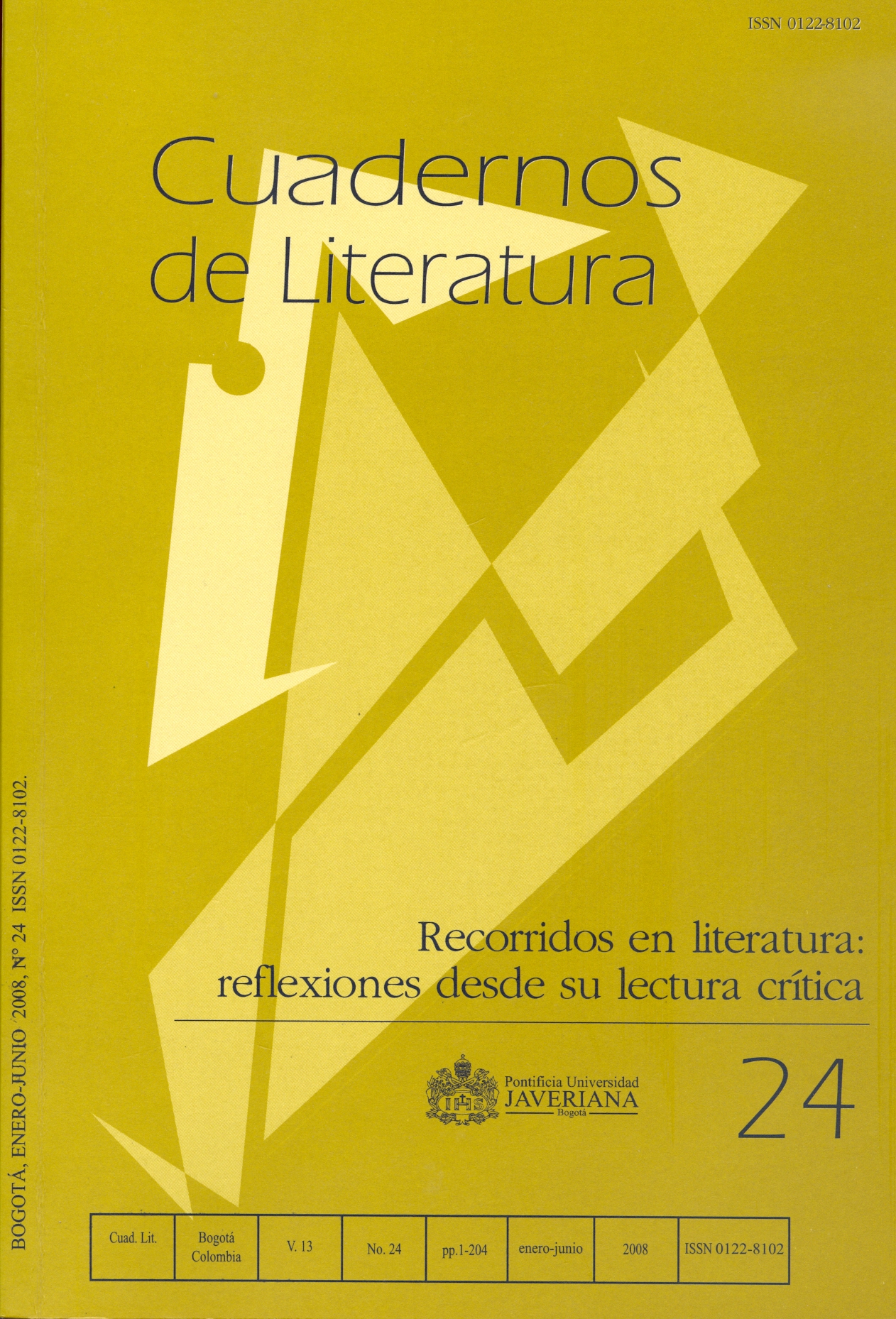Abstract
La mujer tiene una presencia ineludible en Veinte poemas de amor y una canción desesperada de Pablo Neruda, pero su descripción es ambigua. En algunos poemas es "cuerpo" o alguna de sus "partes"; en otros, en cambio, se transforma en "recuerdo", "añoranza", "boina", "puerto" o "palabra". De la descripción física el poeta pasa a enumerar características abstractas que no denotan a la amada en calidad de persona. Esta disección textual es una representación imprecisa y distorsionadora porque explica a la mujer a partir de partes de su cuerpo o la suma de éstas. El ser al que supuestamente se ama, o cuya belleza "única" se quiere ensalzar, es un pedazo de carne que en muchos casos se vuelve "todo" sin ser lo que es: un sujeto con identidad propia.Cuadernos de Literatura is registered under a Creative Commons Attribution 4.0 International Public License. Thus, this work may be reproduced, distributed, and publicly shared in digital format, as long as the names of the authors and Pontificia Universidad Javeriana are acknowledged. Others are allowed to quote, adapt, transform, auto-archive, republish, and create based on this material, for any purpose (even commercial ones), provided the authorship is duly acknowledged, a link to the original work is provided, and it is specified if changes have been made. Pontificia Universidad Javeriana does not hold the rights of published works and the authors are solely responsible for the contents of their works; they keep the moral, intellectual, privacy, and publicity rights.
Approving the intervention of the work (review, copy-editing, translation, layout) and the following outreach, are granted through an use license and not through an assignment of rights. This means the journal and Pontificia Universidad Javeriana cannot be held responsible for any ethical malpractice by the authors. As a consequence of the protection granted by the use license, the journal is not required to publish recantations or modify information already published, unless the errata stems from the editorial management process. Publishing contents in this journal does not generate royalties for contributors.


